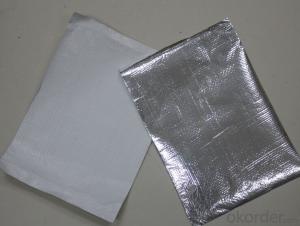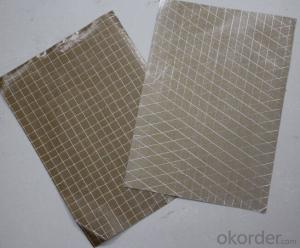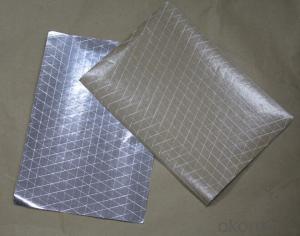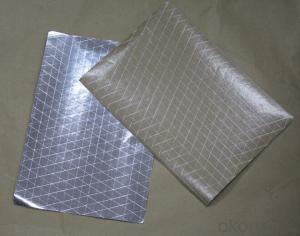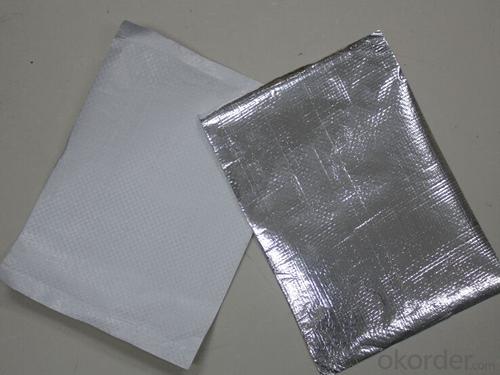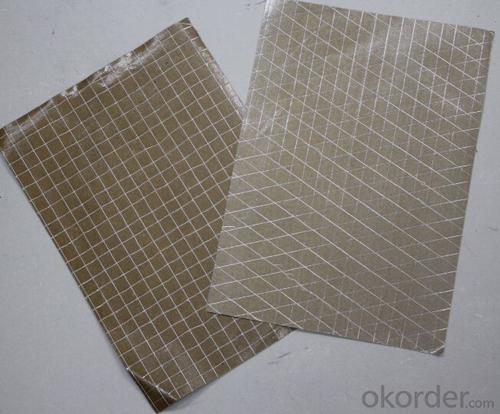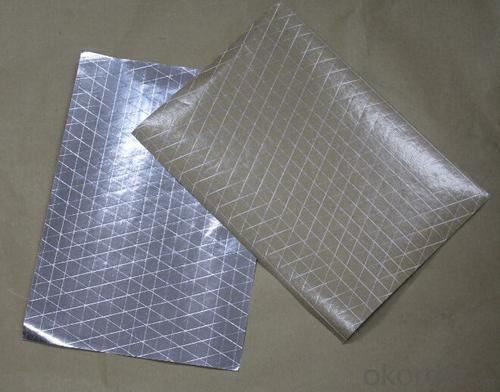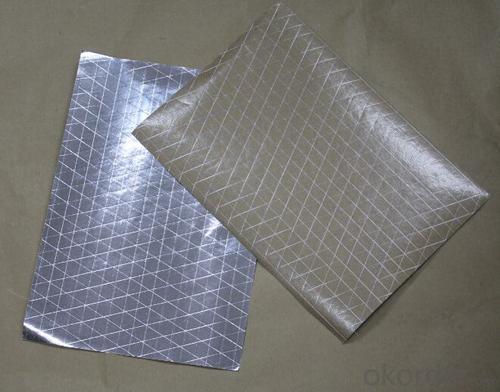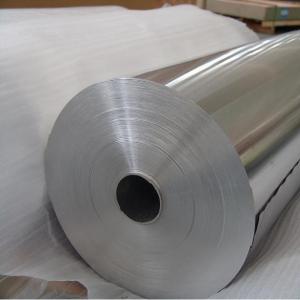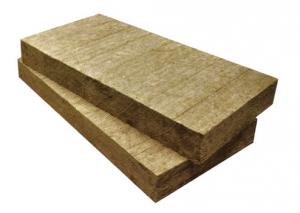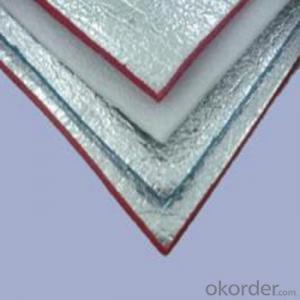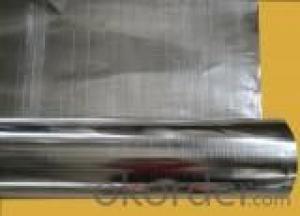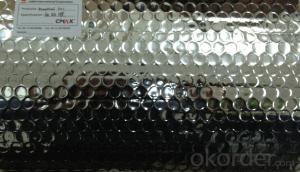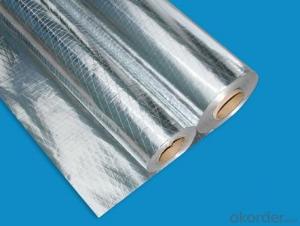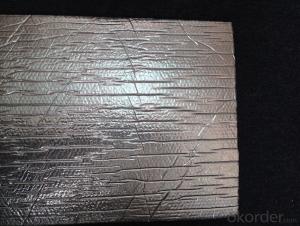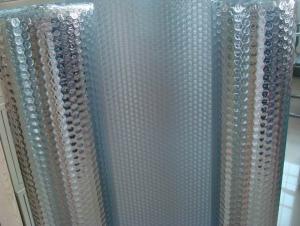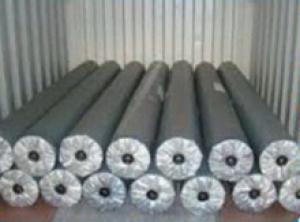Aluminum Foil Facing Insulation Flexible Ducts Bubble Foil Glasswool
- Loading Port:
- Tianjin
- Payment Terms:
- TT OR LC
- Min Order Qty:
- 3000 m²
- Supply Capability:
- 30000 m²/month
OKorder Service Pledge
OKorder Financial Service
You Might Also Like
Specifications
aluminum foil bubble insulation manufacture
thermal insulation
Construction:
Tri-directional scrim Heat Sealing Aluminum Foil : Corrosion resistance Coating/Foil: 7Microns/anti-heat adhesive/Kraft: 60 or 50gsm /Tri-way Scrim/Vinyl: 25Micons.
Application:
Heat Sealing Aluminum Foil is suitable for on-line lamination with thermal insulation such as glass wool blanket, rock wool or mineral wool by heating.
An thermal insulation facing to block radiant heat coming into house through the roof and walls during the summer and retain indoor heat generated during the winter. Heat Sealing Aluminum Foil facing also used as a water vapor barrier in air conditioning ductworks and cold rooms.
Benefit:
Heat FSK Facing is no need applying extra adhesive. Better corrosion resistance.
Does not contain hazardous chemicals or harmful materials that cause itching or respiratory problems.
A radiant barrier stops 97% of radiant heat transfer which improves the performance of the insulating material. Scrim reinforced for strength and durability.
Roll Width: 1.2M, 1.25M.etc
Roll Length: Up to 2500M.
- Q: This question asks for instructions on how to use aluminum foil as a wrapping material for food.
- <p>To use aluminum foil facing to wrap food, first ensure the foil is clean and free of tears. Cut a piece of foil large enough to fully cover the food item. Place the food in the center of the foil. Bring up the sides of the foil and fold them over the food, sealing the edges tightly to prevent air and moisture from entering. For more secure wrapping, double fold the edges or use a crimping technique. For items like fish or meat, you can also create a sealed pouch by folding the foil over the food, then folding the edges inward and crimping to close. Always handle food with clean hands or utensils to maintain hygiene.</p>
- Q: What are the safe and effective alternatives to aluminum foil for food packaging?
- <p>Yes, there are several substitutes for aluminum foil facing that are safe and effective for food packaging. One such alternative is parchment paper, which is non-toxic and can withstand high temperatures without releasing harmful chemicals. Silicone baking mats are also a good option, as they are reusable, non-stick, and can be used in both the oven and freezer. Additionally, beeswax wraps can be used as a natural, eco-friendly alternative for wrapping food, although they may not be suitable for high-temperature cooking. It's important to ensure that any substitute used is food-safe and can handle the intended cooking temperature to maintain food safety and quality.</p>
- Q: This question asks about potential health or safety risks associated with the use of non-stick coatings on food covers or containers.
- <p>Non-stick coatings on food covers or containers are generally safe when used as directed. However, there are some concerns. High heat can cause these coatings to release potentially harmful fumes or chemicals, such as perfluorooctanoic acid (PFOA), which has been linked to health issues. It's important to avoid overheating non-stick items and to not use them in the oven or broiler. Always follow the manufacturer's guidelines for safe use and cleaning. If the coating is scratched or peeling, it's best to replace the item to prevent ingestion of the coating particles.</p>
- Q: What are the potential health risks associated with cooking food using aluminum foil?
- <p>Cooking with aluminum foil can potentially lead to the leaching of aluminum into the food, which may have health implications. While the body naturally eliminates small amounts of aluminum, excessive intake can be harmful. Aluminum has been linked to neurological disorders, including Alzheimer's disease, although the connection is not definitively proven. It's also important to note that the amount of aluminum that leaches into food during cooking is generally considered to be low. However, for those concerned about aluminum exposure, it's advisable to minimize the use of aluminum foil in cooking, especially for acidic foods which can increase the rate of aluminum leaching.</p>
- Q: What are the advantages of using food covers made from materials other than traditional ones, specifically regarding health benefits?
- <p>Yes, there are health benefits to using food covers made from alternative materials. For instance, using food covers made from materials like beeswax or silicone can reduce the use of single-use plastic, which is beneficial for both the environment and human health by minimizing exposure to harmful chemicals that can leach from plastic. Additionally, some materials like glass or stainless steel food covers are non-porous and do not retain odors or bacteria, which can help maintain food freshness and safety. Using eco-friendly and reusable food covers can also contribute to a reduction in waste, promoting a healthier planet and, by extension, a healthier lifestyle.</p>
- Q: This question asks for a comparison between aluminum foil facing and other types of metal foils, highlighting their differences.
- <p>Aluminum foil facing is distinct from other metal foils due to its specific properties. It is lightweight, highly reflective, and offers excellent heat conductivity, making it ideal for insulation and cooking applications. Unlike other metal foils, aluminum foil is non-toxic and can be safely used in food packaging and preparation. It is also corrosion-resistant and has a lower melting point compared to metals like steel or copper, which affects its usability in various industries. Additionally, aluminum foil is more affordable and widely available than some other metal foils, contributing to its popularity in everyday use.</p>
- Q: This question asks for the method of wrapping food using aluminum foil.
- <p>To wrap food with aluminum foil, first clean your hands and ensure the foil is shiny side out. Cut a piece of foil large enough to cover the food completely. Place the food in the center of the foil. Bring the edges of the foil together over the food, then fold and crimp the edges to seal tightly. Ensure there are no gaps to prevent the food from drying out or the foil from tearing. For more complex shapes, you can double the foil and create a pouch or tent, folding the edges to secure the shape. Always handle food with clean hands to maintain hygiene.</p>
- Q: Is it safe and effective to use aluminum foil with a reflective side to wrap vegetables when grilling?
- <p>Yes, you can use aluminum foil facing to wrap vegetables for grilling. Aluminum foil helps to retain moisture and heat, ensuring that the vegetables cook evenly and remain tender. The reflective side of the foil can also help to distribute heat more evenly. However, be cautious not to let the foil touch the flame directly, as it can cause flare-ups. Make sure to poke some holes in the foil to allow steam to escape and prevent the vegetables from becoming too soggy.</p>
- Q: The user is asking if aluminum foil can be used to make a pizza crust more flaky and tender.
- <p>Using aluminum foil facing on a pizza crust won't inherently make it more flaky or tender. The flakiness and tenderness of a pizza crust are determined by the ingredients used and the method of preparation. For a flakier crust, consider using a higher fat content like butter or shortening, and for tenderness, ensure proper hydration and kneading of the dough. Aluminum foil is typically used for its heat distribution properties and to prevent direct contact with the oven rack, which can help in browning the bottom of the crust. However, it doesn't affect the flakiness or tenderness directly.</p>
- Q: Is it possible to use aluminum foil facing in the process of making desserts or cakes?
- <p>Yes, you can use aluminum foil facing to make desserts or cakes. It is commonly used for lining baking pans to prevent sticking and to ensure easy removal of the baked goods. Aluminum foil is heat resistant and can be used in the oven, but it's important to avoid direct contact with the heating elements to prevent burning. For best results, use heavy-duty aluminum foil and ensure it covers the bottom and sides of the pan completely.</p>
Send your message to us
Aluminum Foil Facing Insulation Flexible Ducts Bubble Foil Glasswool
- Loading Port:
- Tianjin
- Payment Terms:
- TT OR LC
- Min Order Qty:
- 3000 m²
- Supply Capability:
- 30000 m²/month
OKorder Service Pledge
OKorder Financial Service
Similar products
Hot products
Hot Searches
Related keywords
